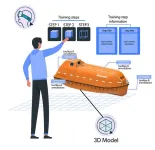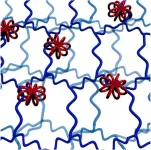Research Background
The International Maritime Organization (IMO) has identified the human element as one of the key attributes for the safety of life at sea and a contributing factor to most of the casualties in the shipping sector. The International Convention for the Safety of Life at Sea (SOLAS) is an international maritime treaty which requires signatory flag states to ensure that ships flagged by them comply with minimum safety standards in construction, equipment and operation. As part of the SOLAS code, there is the requirement that all personnel on vessels at sea must undertake Standards of Training, Certification and Watchkeeping training (STCW). Emergency drills and training have the objective of preparing a trained and organized response to emergencies, which may have critical impact on passenger and crew safety and unexpectedly threaten loss of life at sea. Based on the role of each member onboard, the training prepares personnel for safe and effective use of LSAs, starting with basic use of Personal Survival Equipment and ranging up to the management of whole vessel LSA systems. This research is one of the issues that the EU-funded SafePASS project (Grant agreement ID: 815146) aims to address. SafePASS aims to redefine related evacuation processes, systems and equipment as well as the international regulations for passenger ships. As part of the SafePASS toolkit, a dedicated MR training application has been developed which targets to support the acquisition of procedural skills to enhance the situational awareness of cruise ship personnel for LSA lifeboat operations
As part of SafePASS project, the MR Training Application was developed to support the training of crew members in equipment usage and operation, as well as in maintenance activities and procedures. In order to develop an MR tool that would address actual user needs and would cover current gaps in maritime industry, a detailed methodology was followed covering the whole design, development and validation process. This methodology consisted of 6 major steps: (1) collection of user requirements; (2) system specifications and design; (3) definition of use cases; (4) application mock-ups; (5) prototype development; (6) validation and evaluation.
Results and Significance
The SafePASS MR Training Tool is a component of the application which uses Mixed Reality to attach an LSA digital twin on real environment allowing real time interaction with its parts and targets to assist crew members and LSA manufacturers to train on handling LSA lifeboats, through various scenarios provided. The training is accomplished exploiting the real time interaction with the virtual LSA (digital twin), detecting user's performed actions and requesting the user to successfully accomplish each step of the training scenario. For each step, useful information is provided through images, text, videos and animations on the corresponding virtual parts of the LSA.
Further to the validation in lab environment, the MR Training application was tested and validated using a real LSA lifeboat through a dedicated validation campaign that was conducted at the Viking Safety Academy training facilities in Greece. As part of this campaign, LSA training and maintenance sessions were conducted with the participation of volunteers and Viking Safety Academy's operational and skilled personnel, using the application and interacting with the LSA 3D models. The volunteers that participated in this demonstration, either trainers or individuals related to LSA procedures, were able to assess the AR Training application, evaluate its performance and give feedback to the technical partners. Additionally, the application tools were successfuly demonstrated to relevant stakeholders of the SafePASS project and externals in various workshops and demonstration activities, allowing participants to test and evaluate the AR/MR applications. One of them was conducted during the pilot demonstration of SafePASS project that took place onboard Royal Caribbean cruise ship that was constructed at Chantiers de l′Atlantique shipyard, in Saint Nazaire, France. The pilot demonstration was performed during the dry-docking process, when the construction was in its final stage and the ship was ready to sail.
In general, the experience for the users was by far more interesting than the traditional training procedures. The users also indicated that it is of great value that they can directly practice the knowledge gained from procedural information, while the goal to provide training for “everyone everywhere” was considered achieved. Besides the positive comments received, recommendations for future exploitation were also provided. The most important future exploitation proposed was the expansion of the MR Training application to other evacuation systems apart from LSAs, such as liferafts and mass evacuation systems. This would be of particular interest, since this type of LSAs are deployed physically even less frequently that the lifeboats. Moreover, in this way, the applicability of the application can be significantly broadened, enhancing the awareness of users on equipment usage and maintenance. As a result, the preparedness of crew members during an evacuation is increased and the overall evacuation performance can be improved.
The MR training application has successfully achieved its goals to provide a training environment for“everyone” and “everywhere” regarding LSA lifeboats emergency and maintenance procedures. Training performed in any desired location solves many issues of the traditional training procedures. Augmented Reality has been validated as a technology capable of performing well in a sector where Virtual Reality is considered the most popular. Trainers and users found the training approach through MR experience far more interesting and more interactive than traditional training methods. Although handling HMD and performing actions with it required a learning curve for inexperienced users, the results show that value is added in remembering procedures. Nonetheless, the application still has room for improvement and areas to be evaluated and validated. For example, the simulation of crowding and other stress factors during evacuation procedures or the response of HMD in open spaces with different weather conditions for maintenance procedures can be taken into consideration for further study and investigation. Finally, future work should include developing a Content Management System (CMS) that will make training and maintenance scenario creation and editing easier for relevant stakeholders.
END





